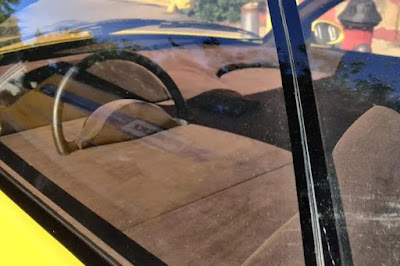Rare ONES - Marilyn Monroe's legacy continues to captivate us even decades after her passing. Recently, a piece of her glamorous life went under the hammer - her beloved 1956 Ford Thunderbird. This iconic car, steeped in history, not only graced the roads but also played a role in one of Hollywood's most celebrated love stories.
 |
| 1956 Ford Thunderbird that Marilyn Monroe once owned. (Picture from: Pinterest) |

As the Ford Thunderbird holds a special place in automotive history as
well. Originally designed as a 2-seat convertible sports car, it quickly
became synonymous with personal luxury and style.
Imagine cruising down the boulevard in a car once owned by the enchanting Marilyn Monroe herself. It's not just a vehicle; it's a piece of cultural history, a tangible connection to the golden era of cinema. The allure of owning such a treasure is undeniable.
 |
| 1956 Ford Thunderbird was born as a 2-seat convertible sport car that tends to be impressed as a personal luxury car. (Picture from: JuliensLive) |
Monroe's Thunderbird, with its powerful V8 engine roaring to life, embodied the spirit of freedom and adventure that defined an era. Specifically, the Ford Thunderbird's V8 drivetrain is capable of producing up to 225 horsepower, making it one of the best in its time. This power allows the car to accelerate and reach a top speed of 181 km/h, showcasing its performance prowess.
 |
| Dashboard view of the Monroe once owned car. (Picture from: Motor1) |
 |
| The genuine leather seat view of Ford Thunderbird once owned by Marilyn Monroe. (Picture from: JuliensLive) |
As the auction date approached, anticipation grew among collectors and enthusiasts alike. The chance to own a piece of Marilyn Monroe's legacy doesn't come often, and the bidding reflected that. With estimates ranging from $300,000 to $500,000, the stage was set for a thrilling auction.
 |
| Rear side view of the Monroe once owned car. (Picture from: Motor1) |
On November 17, 2018, history was made once again as Marilyn Monroe's Ford Thunderbird found a new home. The winning bid of $490,000 echoed through the auction hall, a testament to the enduring allure of Hollywood's iconic figures.
 Owning a piece of history isn't just about possessing an object; it's about being a custodian of memories, a curator of stories that transcend time. Marilyn Monroe's Ford Thunderbird is more than a car; it's a symbol of an era, a reminder of a glamorous past that continues to inspire us today. *** [EKA [04102018] | FROM VARIOUS SOURCES | JULIEN'S LIVE | MOTOR1]
Owning a piece of history isn't just about possessing an object; it's about being a custodian of memories, a curator of stories that transcend time. Marilyn Monroe's Ford Thunderbird is more than a car; it's a symbol of an era, a reminder of a glamorous past that continues to inspire us today. *** [EKA [04102018] | FROM VARIOUS SOURCES | JULIEN'S LIVE | MOTOR1]Note: This blog can be accessed via your smart phone.LIVE












































